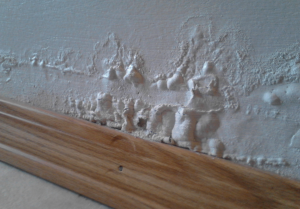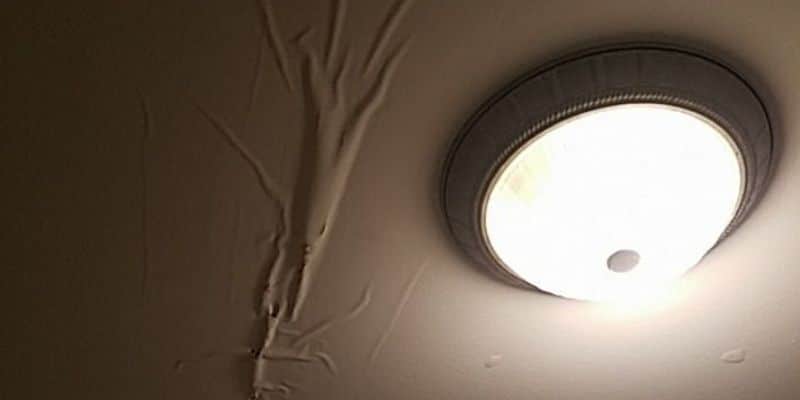From Detection To Correction - Managing Water Stains On Your Walls
From Detection To Correction - Managing Water Stains On Your Walls
Blog Article
We've stumbled upon this post about Indicators of Water Damage Behind Walls listed below on the net and figured it made perfect sense to share it with you on this site.

Water stains on walls are not enjoyable to the eyes. Your house ought to lack spots on the wall surfaces, roofing, or floorings. That is the excellent state of a residence and also its frameworks. Sometimes it seems practically unavoidable to experience water spots on wall surfaces in residences.
House owners residing in damp regions continuously handle the fear of water stains on wall surfaces. Yet that does not have to be the case for you. With precise and well-rounded information on the sources of water spots and punctual fixing procedures, you will certainly constantly be an action ahead of such incidents. This article promises to be a practical guide for you.
3 Common Sources Of Water Spots on Wall Surfaces
In contrast to popular belief, water discolorations on walls do not constantly come from poor structure materials. There are numerous reasons for water discolorations on walls. These include:
Damp
When hot moist air meets with dry cold air, it causes water droplets to form on the walls of buildings. When there is steam from cooking or showers, this occurs in washrooms and also cooking areas. The water beads can discolor the surrounding walls in these parts of your home and spread to other areas.
Damp or condensation affects the roof and walls of buildings. This causes them to appear darker than various other locations of the residence. When the wall surface is wet, it develops an ideal setting for the development of fungis and also germs. These might have adverse impacts on health and wellness, such as allergic reactions and also respiratory disorders.
Poor Drainage
When making a building plan, it is important to make sure appropriate water drainage. This will certainly protect against water from permeating right into the wall surfaces. Where the drainage system is clogged or nonexistent, underground moisture builds up. This links to too much moisture that you see on the wall surfaces of your structure.
The leading cause of wet walls, in this case, can be an inadequate water drainage system. It can additionally result from bad administration of sewage pipes that run through the structure.
Pipeline Leaks
The majority of residences have a network of pipes within the walls. This guarantees that the pipes are faraway from the reach of devastating rats. It always enhances the viability of such pipes, as there is little oxygen within the wall surfaces. This prevents rust.
Yet, a disadvantage to this is that water leak impacts the walls of the structure as well as triggers widespread damages. A telltale sign of malfunctioning pipes is the look of a water discolor on the wall.
Pro Tip
A houseplant in your house likewise increases its moisture. If the residence is already humid, you may desire to present houseplants with minimal transpiration. An example of suitable houseplants is succulents.
Water Spots on Wall Surface: Repair Tips
When dealing with water stains, house owners would generally want a fast solution. They would certainly soon realize this is detrimental as the water discolorations recur. Here are a few practical pointers that will direct you in the repair service of water discolorations on wall surfaces:
Conclusion
Although no one wants to have water stains on walls in their home, it can happen to the best of us. This post offers you leverage, as you now understand exactly how to handle this accident if it does happen.
It is constantly best to hire expert solutions to assist take care of the damages in your home.
Sometimes it seems almost inevitable to experience water stains on walls in homes.
Contrary to popular belief, water discolorations on wall surfaces do not constantly stem from inadequate building materials. There are several causes of water discolorations on wall surfaces. The water beads can tarnish the bordering walls in these parts of your home and spread to other locations.
Below are a few useful tips that will lead you in the fixing of water discolorations on wall surfaces:
Water Damage Signs and Dangers
Water is the lifeblood of our planet, sustaining human life, as well as the lives of all animals and plants. Without water, our existence would be in immediate peril. While water is undeniably essential, there are certain situations in which an influx of unwanted water can create huge problems and cause damage to your home.
If you ever experience water damage in San Diego, Certified Restoration specializes in water damage restoration, helping to quickly clean up any water damage so you can go back to enjoying the comfort of your home.
What is Water Damage and How Can It Damage Your Home?
Water damage can occur from obvious causes, such as a burst pipe or extreme weather elements. However, much more common is water damage caused by hidden water leaks. Over time, little drops of water hidden within your home can cause serious structural issues.
Water damage restoration can turn into an expensive headache if you are not vigilant about addressing any signs of water damage in your home. Not only can water cause damage to the structure of your home, but water leaks can also quickly become a ripe environment for mold to grow, which can lead to future health issues. That is why it is important to try to identify water damage as quickly as possible, saving your home from possible damage and your wallet from the resulting water damage cleanup expenses.
What are the Signs of Water Damage in Your Home?
In order to avoid significant damage to your home, you need to constantly be searching for signs of water damage in your home. There are a few easy to identify signs of water damage in your home, and below we identify the most common signs. If you observe any of these signs of water damage in your home, you should call your water restoration company as soon as possible.
Stains on the Walls and Ceilings
If you see patches of paint discoloration or obvious stains on your walls and ceilings, that is a clear sign of water damage in your home. Do not try to paint over these stains, as that is not a fix and the issue will often resurface through the new paint. In some cases, if you paint over a water stain it will resurface over a larger area of the affected wall or ceiling.
That is why you need to immediately call in a water damage cleanup specialist if you see stains on the walls and ceilings. In many cases, this can be caused by a hidden plumbing issue that will need immediate attention.
Flaking or Peeling Paint
Similar to ceiling and wall stains, peeling or flaking paint is a major tell that your home is experiencing water damage. When your drywall is exposed to excess moisture, the moisture will try to escape through the wall or ceiling, which in turn will cause the paint to lift off its surface. This is due to the fact that walls tend to absorb any and all moisture like a sponge. As a result, water damage near any drywall can spread quite easily.
Soft or Swollen Drywall
Water damage, when left unaddressed, can often cause walls and ceilings to appear swollen. In some extreme cases, the swelling can eventually cause your ceiling to sag. This can potentially be hazardous to anything fragile in your home, as well as put your family in danger.
How Do I Test For Water Damage or Leaks?
Turn off all water in your home. This includes faucets, appliances that use water (such as a freezer that makes ice), and any other water outlet in your house. Go to your water meter and write down the usage statistics Wait 3 hours with the water off, and then go to the water meter and check the water usage statistics again. If your water usage has gone up in any way over the span of three hours with all of your water turned off, then you have a water leak somewhere in your home. If you are still not sure, you can check out the top 8 places to look for water damage https://certifiedrestorationinc.com/blog/water-damage-signs-dangers/

I'm certainly very enthusiastic about and I am assuming you enjoyed the new entry. Appreciated our posting? Please share it. Help another person check it out. I recognize the value of reading our article about .
Browse Website
Report this page